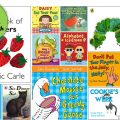Author: Julia Donaldson
Illustrator: Nick Sharratt
Publisher: Macmillan Children’s Books
Year of publication: 2004
Language: English
Type of resource: Children’s picture book in rhyme
Themes: Mealtime, animals, manners, behavior, humor
Age range: 4 to 8 years old
School levels: Kindergarten to 2nd Grade (KS1)
Main learning objective: Develop vocabulary related to animals and mealtime actions while raising awareness about English-speaking politeness codes
Main language objective: I can name common animals and use polite table language such as “Please pass…” and “It’s too hot for me.”
Book Summary
At a lively animal feast, each character expresses a craving or dislike for the food being served: the seal is hungry, the cow is busy, the gazelle sniffs the air, and the kangaroo encourages eating carrots. The book unfolds through a rhythmic chain of short dialogues, where each animal reacts in a typical or exaggerated way: impatience, disgust, greed, laziness… all leading to a humorous twist at the end. The rhymes, repetition, and playful tone make the story highly accessible to young English learners.
Culture and Vocabulary
In English-speaking cultures, mealtime is an ideal moment to learn and practice manners: thanking (“Thank you”), requesting (“Please”), commenting on temperature or smell, and helping tidy up. The book humorously contrasts polite behaviors with less courteous ones, providing a perfect tool to explore classroom and societal expectations of respectful behavior.
Animals: seal, cow, gazelle, pony, chimpanzee, hen, duck, kangaroo, goose, rabbit, mole, hyena, swan, moth, pup, sheep.
Food / Mealtime words: macaroni, carrots, chocolate mousse
Action verbs: smell, eat, blow, grab, lick, wash up, sleep
Emotions / Reactions: hungry, shy, fussy, greedy, angry, sad, happy, helpful, lazy
Idiomatic expressions and interjections: Yuck, It’s all gone, Let’s wash up, Blow on it, It’s coming now, They’re good for you
Grammar and Structures
- Simple WH-questions: “Where’s the meal?” / “What can I smell?”
- Subject-verb-object affirmatives: “It’s coming now.” / “They’re good for you.”
- Future with WILL (contracted form): “I’ll lick the bowl.” / “I’ll eat the cloth.”
- Imperatives: “Blow on it, then.” / “Let’s wash up.” / “Don’t just grab it.”
- Contractions: “It’s all gone” helps students get familiar with authentic spoken English
- Negatives: implicit in expressions like “Too hot for me!”
- Dialogue tags in 3rd person: “says hungry Seal” / “says busy Cow” → useful structure to reinforce 3rd person present simple
Phonology
- Strong rhymes: goose / mousse, mole / bowl, hyena / cleaner
- Alliteration (initial sound repetition): “fussy Duck”, “helpful Pup”, “greedy Goose”, “busy Cow”
- Rising intonation in questions: “What can I smell?”
- Expressive intonation for emotions: “Yuck!”, “It’s all gone!”, “Too hot for me!”
- Work on long and short vowel sounds: [ʌ]: duck, pup, yuck ; [iː]: sheep, sleep, greedy ; [aʊ]: cow, now ; [əʊ]: bowl, blow
Teaching Suggestions
Before reading
- Review animal names with flashcards
- Brainstorm favorite foods and food-related preferences
- Introduce English table manners (Please / Thank you)
During reading
- Act out verbs (blow, lick, sleep…)
- Repeat the “says + animal” structure to build rhythm
- Ask predictive questions: “What’s coming next?”
After reading
- Matching game: place action verb under the corresponding animal (lick → Mole)
- Sort behaviors into “Good manners” vs “Bad manners”
- Play “It’s too hot/cold for me” with food flashcards
Grammar mini‑lesson
- Practice WH-questions: who / what / where
- Reinforce verbs: eat, sleep, grab, blow, lick
Cross-Curricular Connections
Civic & Social Education: Discuss table manners and school lunchroom rules.
Media Literacy: Create an audio recording of the story with sound effects.
Visual Arts: Design placemats featuring each animal and its favorite food.
Music: Learn animal- or food-themed songs (“I Am a Little Teapot” , “Apples and Bananas” ).
PE / Drama: Emotion freeze game – students pose as each animal with its emotion (hungry, angry, lazy…)
Project Ideas
“My Animal Menu” Project: Each student invents an imaginary animal, its favorite food, and table behavior. They create an illustrated English profile page. Collectively assemble into a class album.
Animal Restaurant Role-Play: Over several sessions, students design a menu, take on roles of waiters, chefs, and guests, and use structures like “Would you like…?” and “Here you are.” End the project with a recorded performance.
Book Extension: Read Dinner at the Panda Palace (Amazon Affiliate Link) by Stephanie Calmenson to compare other animal feasts and expand food vocabulary.
Conclusion
Chocolate Mousse for Greedy Goose is a highly effective and enjoyable introduction to English for young learners. It offers rich opportunities to explore vocabulary, phonics, grammar, and classroom values through humor, rhyme, and lively dialogue. The engaging format supports memorization, repetition, and meaningful communication around universal themes like food and manners.





